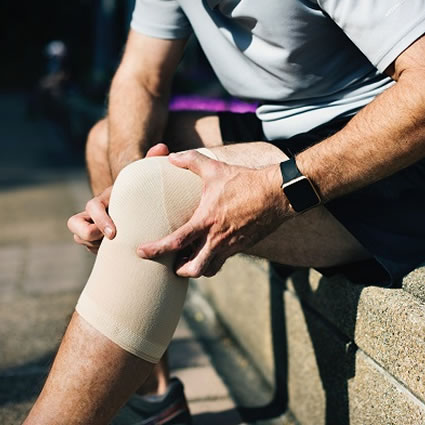Physio Treatment for Ligament Damage at Complete Care Health – Maddington
What is a Ligament?
 A ligament is a structure in the body that’s primary function is to stabilise joints and prevent them from moving too far into potentially dangerous directions. Ligaments do not attach to muscle and instead cross a joint by attaching to the two bones either side of the joint. Ligaments are nearly always associated with a muscle which they support to help prevent injuries.
A ligament is a structure in the body that’s primary function is to stabilise joints and prevent them from moving too far into potentially dangerous directions. Ligaments do not attach to muscle and instead cross a joint by attaching to the two bones either side of the joint. Ligaments are nearly always associated with a muscle which they support to help prevent injuries.
What is a Ligament Sprain?
A ligament sprain occurs when the joint is moves too far into a direction and the ligament tear occurs. Tears and sprains happen to different degrees and are classified into three different grades.
Grade 1: A small number of fibres torn (usually less than 5%) resulting in mild pain and swelling with no loss of joint stability.
Grade 2:Partial tear of a ligament resulting in moderate pain and swelling with potentially mild joint instability. Some bruising may be evident.
Grade 3: Referred to as a “rupture” of the ligament where the entire ligament is torn either in half or off the bone. This usually results in severe pain, large amounts of swelling and bruising along with noticeable instability of the affected joint.
Common Areas of Ligament Injury
- Shoulder – Dislocation injuries
- Wrist – Falling or sport related injuries
- Knee – Falling or impact injuries (ACL, PCL, MCL, LCL injuries)
- Ankle – Running, falling or sporting injuries (outside ankle ligaments)
Treatment of Ligament Injuries
There are two pathways for ligament injury management, conservative and surgical. Conservative management is used for all three grades of sprains/tears while surgical is only considered in grade 3 tears/sprain once conservative management has failed or is not progressing well.
Initially involves pain relief techniques including PRICE (protection, rest, ice, compression and elevation), anti-inflammatories, pain killers and immobilisation of the joint (taping, compression bandages, braces)
Progresses to hands on treatment techniques to improve tissue/ligament healing, reduce joint stiffness, maintain strength of surrounding muscles and return to normal balance, strength and sporting actives.
Grade 1 and 2 tears generally take up to 6 weeks for full recovery and return o previous activities.
Grade 3 tears, depending on the level of target activity, usually take longer than 6 weeks. This does depend on the injured ligament as well.
Only used in grade 3 ligament rupture when conservative management would not be effective or would be slower than the surgical recovery time. Recovery from surgery depends highly on which ligament has been injured and always has a rehabilitation component involved.
Rehabilitation is generally managed by a physiotherapist. It involves hands on techniques to control pain, improves range of joint movement, increase strength, improve balance and return to desired level of activity (either daily tasks or sporting related).
Book an Appointment
Sound interesting? Please contact our Maddington practice to make an appointment.
CONTACT US

